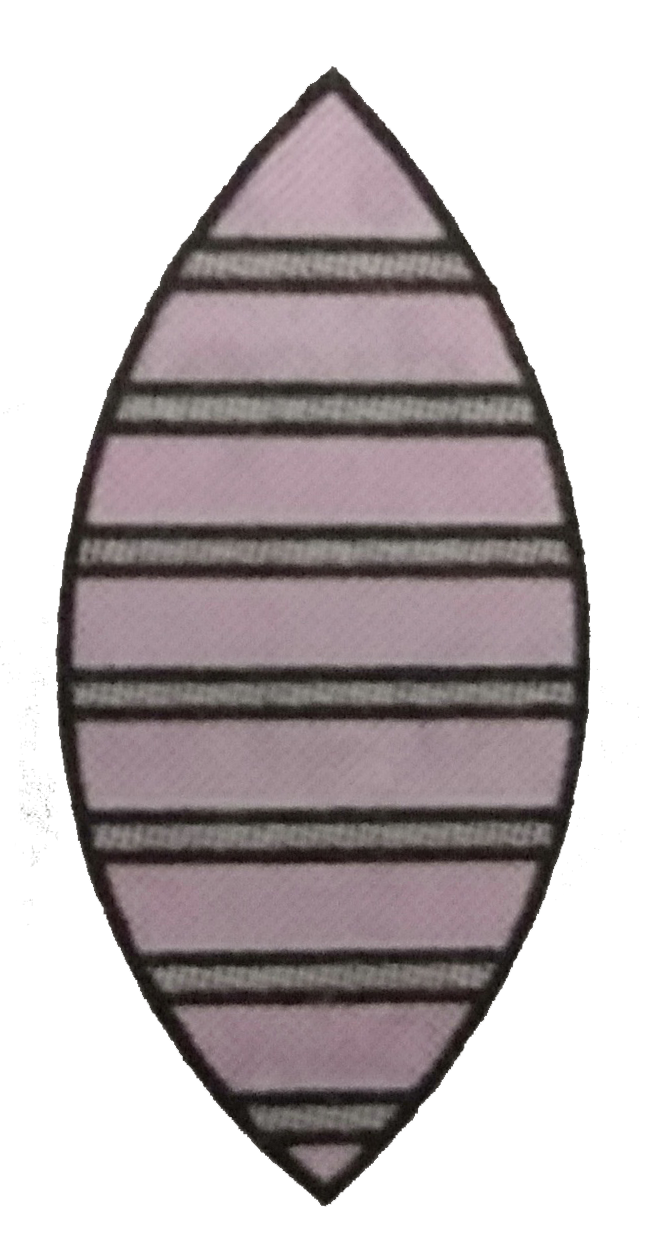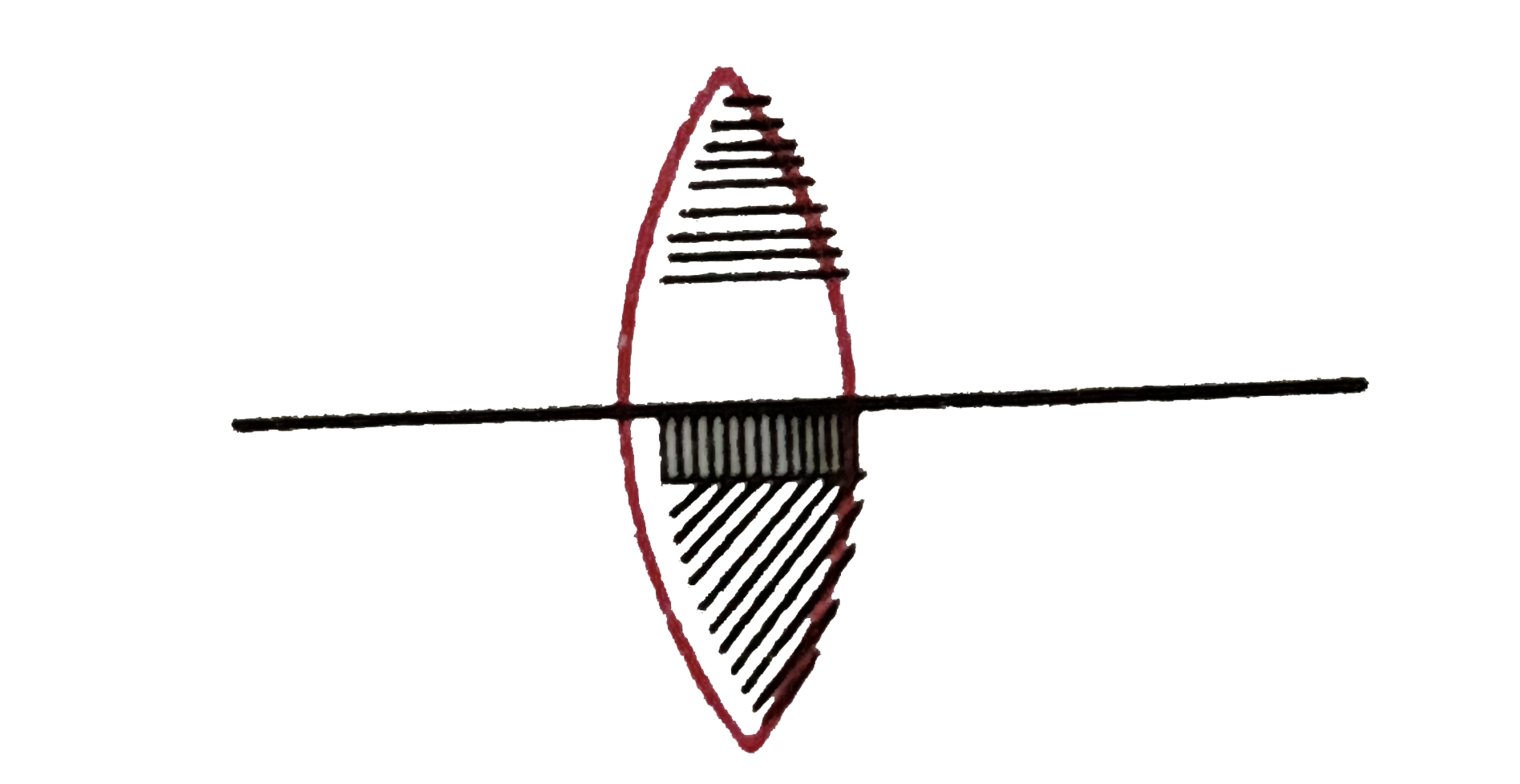A convex lens is made up of three different materials as shown in figure. A point obiect, placed on its axis, the number of images formed are ...........
 Solution in Gujrati
Solution in Gujrati
1
2
3
4
The correct Answer is:C
The number of images formed by convex len made up from different given material = numbe of materials.
So, a point object placed on its axis, the numbe of images formed are three.
Topper's Solved these Questions
- BOOK - KUMAR PRAKASHANCHAPTER - RAY OPTICS AND OPTICAL INSTRUMENTSEXERCISE - SECTION-D (MULTIPLE CHOICE QUESTIONS (MCQs))(MCQs FROM .DARPAN. BASED ON TEXTBOOK)(REFRACTION AND DISPOSION BY PRISM)14videos
RAY OPTICS AND OPTICAL INSTRUMENTS
- BOOK - KUMAR PRAKASHANCHAPTER - RAY OPTICS AND OPTICAL INSTRUMENTSEXERCISE - SECTION-D (MULTIPLE CHOICE QUESTIONS (MCQs))(MCQs FROM .DARPAN. BASED ON TEXTBOOK)(NATURAL PHENOMENA DUE TO SUN LIGHT )11videos
RAY OPTICS AND OPTICAL INSTRUMENTS
- BOOK - KUMAR PRAKASHANCHAPTER - RAY OPTICS AND OPTICAL INSTRUMENTSEXERCISE - SECTION-D (MULTIPLE CHOICE QUESTIONS (MCQs))(MCQs FROM .DARPAN. BASED ON TEXTBOOK)(TOTAL INTERNAL REFLECTION)14videos
RAY OPTICS AND OPTICAL INSTRUMENTS
- BOOK - KUMAR PRAKASHANCHAPTER - MOVING CHARGES AND MAGNETISMEXERCISE - SECTION D (MCQs ASKED IN COMPETITIVE EXAMS)34videos
MOVING CHARGES AND MAGNETISM
- BOOK - KUMAR PRAKASHANCHAPTER - SAMPLE QUESTION PAPER EXERCISE - PART-B SECTION-C5videos
SAMPLE QUESTION PAPER
Similar Questions
If minimum deviation is δm, for prism then refractive index of material of prism is ......
03:36View SolutionIn which phenomenon, white light gets divided into its element colours ?
00:53View SolutionWhen light ray travels from ...... then total internal reflection is possible.
01:54View SolutionElectric charge Q having mass M moves on a circular path of radius R with velocity →v, perpendicular to uniform magnetic field B. When a particle completes one revolution, work done by the field is _______
02:37View SolutionTwo charges –q and +q are located at points (0, 0, –a) and (0, 0, a), respectively.
(a) What is the electrostatic potential at the points (0, 0, z) and (x, y, 0) ?
(b) Obtain the dependence of potential on the distance r of a point from the origin when r/a>>1 .
(c) How much work is done in moving a small test charge from the point (5,0,0) to (–7,0,0) along the x-axis? Does the answer change if the path of the test charge between the same points is not along the x-axis?04:23View SolutionA convex lens is made up of three different materials as shown in the figure. For a point object placed on its axis, the number of images formed are
 02:31View Solution
02:31View SolutionA lens shown in Fig. 6(b).75 is made of two different materials. A point object is placed on the principal axis of the lens. How many images will be obtained ?
 02:15View Solution
02:15View Solution
A convex lens is made of 3 layers of glass of 3 different materials as in the figure. A point object is placed on its axis. The number of images of the object are02:22View SolutionA layered lens is made of materials indicated by shades in the figure. The number of images formed is
View Solutionचित्रानुसार एक लेंस कई प्रकार के पदार्थों की परतों से निर्मित है। लेंस के अक्ष पर स्थित किसी बिन्दु के कितने प्रतिबिम्ब बनेंगे ?
 04:12View Solution
04:12View Solutionएक उत्तल लेंस चित्र में दर्शाये अनुसार दो पदार्था से बना है। उसके मुख्य अक्ष पर स्थित किसी वस्तु के कितने प्रतिबिंब बनेगे-
03:03View SolutionAssertion : A convex lens made of two different materials, A point object is placed on the principal axis, two images formed. Reason:Two images formed by convex lens is always 'virtual'.
02:35View Solutionनीचे दिए गए चित्र में प्रदर्शित एक लेन्स कि दो भिन्न प्रकार के माध्यमों से मिलकर बना है। लेन्स कि मुख्य अक्ष पर बिंदु वस्तु रखी है। कितने प्रतिबिम्ब प्राप्त होंगे ?
 01:47View Solution
01:47View SolutionA convex lens is made of three different materials which are symmetrically distributed as shown in figure. If some point object is placed on its principal axis then what will be the number of images formed ?
04:22View Solutionएक उत्तल लेंस, तीन अलग-अलग पदार्धो का बना है। एक बिंदु वस्तु, मुख्य अक्ष पर रखी जाती है। लेंस द्वारा बने प्रतिबिम्बों की संख्या तीन होगी।
03:36View Solution
